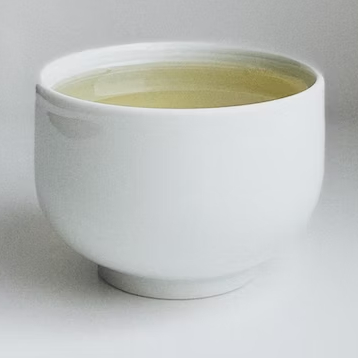The cat carrier stays on during sex
- 17 Posts
- 18 Comments

 31·6 months ago
31·6 months agoYes, I agree it seems scary, but all it really means is that morality is not universal but specific to humans. You could say everything is inherently morally permissible in the sense that there is no higher power which will punish you for your actions, so essentially there is nothing preventing you from committing them. In short, the universe doesn’t give a shit what you do.
Still, your actions do have consequences, and you are inevitably forced to live with them (pretty much Sartre’s viewpoint). Because of this, doing things you think are wrong is often bad for you, because it causes you emotional pain in the form of guilt and regret, and also usually carries along negative social repercussions which outweigh the value of the immoral act in the first place. You could say that people are naturally compelled to act in certain ways out of completely selfish reasons. In this sense, I prefer to look at morality more as a “deal” between the members of a society to act in a certain mutually beneficial way (which is fueled by our instincts, a product of evolution), than something universal and objective.
The reason I doubt in our current understanding of consciousness is because I find its distinction between what is conscious and what isn’t quite arbitrary and problematic. At which point does an embryo become conscious, and how can something conscious be created from something unconscious? The simplest explanation I can imagine is that consciousness is present everywhere and cannot be created nor destroyed. This view (called panpsychism) is absolutely ancient, but seems to be gaining some recognition again, even among neuroscientists.
As you mentioned, “cogito, ergo sum” might be the only real objective truth that philosophy has uncovered so far. I am an optimist in that I believe surely more than one such truth must exist. If it was only discovered 400 years ago, surely there is more to be found. Maybe it is possible to collect some of these small fragments and build some larger philosophical theory from them, one that will be grounded in fact and built up using logic. I guess only time will tell.
And yes, of course some abstraction is beneficial in order to make sense of the world, even if it isn’t completely correct or objective.

 31·6 months ago
31·6 months agoThe issue I see with these theories is that this idea of inherent value they all arrive at is very abstract in a way. What does it even mean for something to have inherent value, and why is it wrong to destroy it?
Another problem is that we talk about destroying life without even fully understanding it in the first place. What if life (in the sense of consciousness) is indestructible?
The way I see it, people accept that life has some inherent value because our self preservation instinct tells us that we don’t want to die and empathy allows us to extend that instinct to other living beings. Both are easily explained as products of evolution, not rational or objective, but simply evolutionarily favourable. All these theories are attempts to rationally explain this feeling, but they all inevitably fail, as they’re (in my opinion) trying to prove something that simply isn’t objectively true.
Anyways, I feel like even if you accepted any individual theory that seems to confirm our current understanding of morality and stuck with it fully, you would come to conclusions which are completely conflicting with it. For example in the case of utilitarianism, you could easily come to the conclusion that not donating most of your money to charity is immoral, as that would be the course of action which would result in the largest total amount of pleasure.

 34·6 months ago
34·6 months agoYou can make ethical arguments based in reason.
Come on, I’d love to hear some, also the stakes are still up if you can give me a rational argument why killing is wrong.

 229·6 months ago
229·6 months agoWhy is killing people wrong, but ok in war? Why do we still kill animals even though we know it’s wrong? Why is killing wrong in the first place? I bet you can’t find a single rational reason. That is because ethics isn’t based on reason, but instead on emotion. Given that, I don’t find it very surprising that it’s often very hypocritical.

 92·6 months ago
92·6 months agoAh yes, good old hay … delicious!

 43·1 year ago
43·1 year agoWhy do you think renewables are better for the environment? Nuclear is very clean and produces next to no emissions. In comparison, solar panels have a production process which produces considerable emissions, once they fail (which is in around 25 - 30 yrs), they basically turn into toxic waste. Similar goes for wind turbines, but they also totally ruin the landscape, since roads have to be built in order to access and maintain them. Additionally they’re not viable everywhere and look ugly af.
That’s how it’s done in chinese. Imo DD/MM/YYYY is better though, since in practice the year is most commonly just the current year and isn’t nearly as important as the day or month.

 1·1 year ago
1·1 year agoHow would you even define hate speech
This post reminded me of a dream I had today.
I was hiking up a hill through a forest and saw a snake by the side of the path. I stopped to look at it. It was completely black with a strange white dotted pattern on its back, unlike any snake where I live. Then I heard something moving a little uphill, I turned to look, and it was another snake, and next to it another. I looked around and the ground was writhing with snakes. I started running away into the forest, but it was getting darker and darker. Then I heard an ominous whirring sound getting progressively louder. I woke up and it was the washing machine.
Altschmerz would mean something like old-pain if translated directly from German I think
From my experience, it’s pretty goddamn hard to find high quality tea that ships from inside the EU. Almost all of the vendors carry a wide variety of teas, but they’re all low quality, since they usually order from wholesalers and not directly from the farmers. If you’re okay with that, you can try scouring the r/tea vendor list for something that fits your needs and is based in the EU. Your best bet if you want the real top-shelf stuff is to order from a specialized international store. I did just order some teas from https://beautifultaiwantea.com/ yesterday, can update about the quality and shipping once they arrive.
It would be pretty cool to have some kind of community vendor list here too. Maybe one that wasn’t as static as the one on r/tea, people would be able to add new vendors, post reviews and such. Just an idea…
Edit: forgot to mention this, search for vendors that list as much information about the tea as possible, stuff like the month or at least season it was harvested, the village it originates from, the altitude, the cultivar, the harvesting method (hand/machine picked) etc. Also make sure the tea is as fresh as possible, ideally spring 2023 or winter 2022, since most teas will start to degrade after around 2 years if they’re not stored properly.

 35·1 year ago
35·1 year agoThe article is well written and all, but that “Copyright © 2023, all rights reserved” at the end is ultimate hypocrisy.
The biggest piece of advice I can give is to avoid tea bags. They usually contain low quality fannings, which don’t give a good flavour. The tea also doesn’t have enough space to expand and steep properly inside them.
If you’re looking at getting a teapot to brew loose leaf tea, maybe get a gaiwan instead. It’s great for most types of tea, save perhaps japanese greens, and allows you to brew with a high leaf to water ratio without using up too much tea.
Also, maybe try to force yourself to drink tea straight, without adding anything, since it can obscure some of the flavours. You’ll get used to it after a while, and I honestly prefer most teas straight (though I usually drink black teas with sugar and milk, since it’s just a stellar combination)
For recommendations, it’s hard to say, since everyone has their preferences. The main types you might want to try are:
-
White teas - these are the least oxidized and generally have bright grassy / floral flavour profiles. Notable ones are Bai Mu Dan, silver needles…
-
Green teas - somewhat more oxidized than white, but still very unoxidized. Are usually pan-fired or steamed to lock in the flavours and stop oxidation. Chinese green teas generally taste just about like what you would expect a green tea to taste like, fresh, grassy, and vegetal. Examples are Longjing, Huangshan Maofeng, Bi Luo Chun, Taiping Houkui… Japanese green teas on the other hand tend to be more vegetal and umami, with notes like cooked spinach or seaweed. There are multiple types: gyokuro, sencha, matcha, bancha, genmaicha, kukicha, houjicha. Gyokuro is the most highly valued out of these and is shaded before harvest to bring out the umami flavour.
-
Oolong teas - these are the most diverse. They are more oxidized than green teas but less than black, which gives them interesting fruity, woody, mineral and floral notes. They are often rolled into tight balls and sometimes smoked. Notable ones include Tie Guan Yin, Da Hong Pao, Dancong, Dong Ding, Jin Xuan…
-
Black teas - the most oxidized, are usually dark, full bodied and can sometimes have fruity flavours. The most notable are teas from Assam, Ceylon, Darjeeling (though some Darjeeling teas lean more towards oolong), Keemun and other Chinese and African black teas.
-
Pu’er - these are are usually teas from Yunnan province, China, and are fermented and pressed into cakes called Bing, which are then dried. There are two types of pu’er, sheng (raw) and shou (cooked). Shou usually has earthy and woody flavours, while sheng can be brighter and more diverse.
When brewing, it’s a good idea to adjust the temperature based on the tea you’re making. White teas should be steeped at around 70-75 °C, greens at 75-80 °C (except gyokuro, which can be steeped at just 50-60 °C or even cold-brewed), oolongs at 80-85 °C and boiling water can be used for black and pu’er teas. To lower the temperature of the water you can just let it sit or transfer it between cold containers. Generally the temperature will drop around 10 °C every time you put it into a new cold container.
-
Looks a lot like Artemisia sp., possibly Artemisia vulgaris, though the leaves are somewhat wrinklier than usual. Maybe check whether the undersides of the leaves are silvery, since that’s typical for mugwort.

 1·1 year ago
1·1 year agoOh lol, I love how the “chicken alfredo” is practically more similar to a genuine carbonara than the one they have.

 0·1 year ago
0·1 year agoThe ham/bacon they use is guanciale and the sauce is actually not made from cream but instead eggs. They are added into the pasta while it’s still hot, which cooks them.










Next step is baking your own!